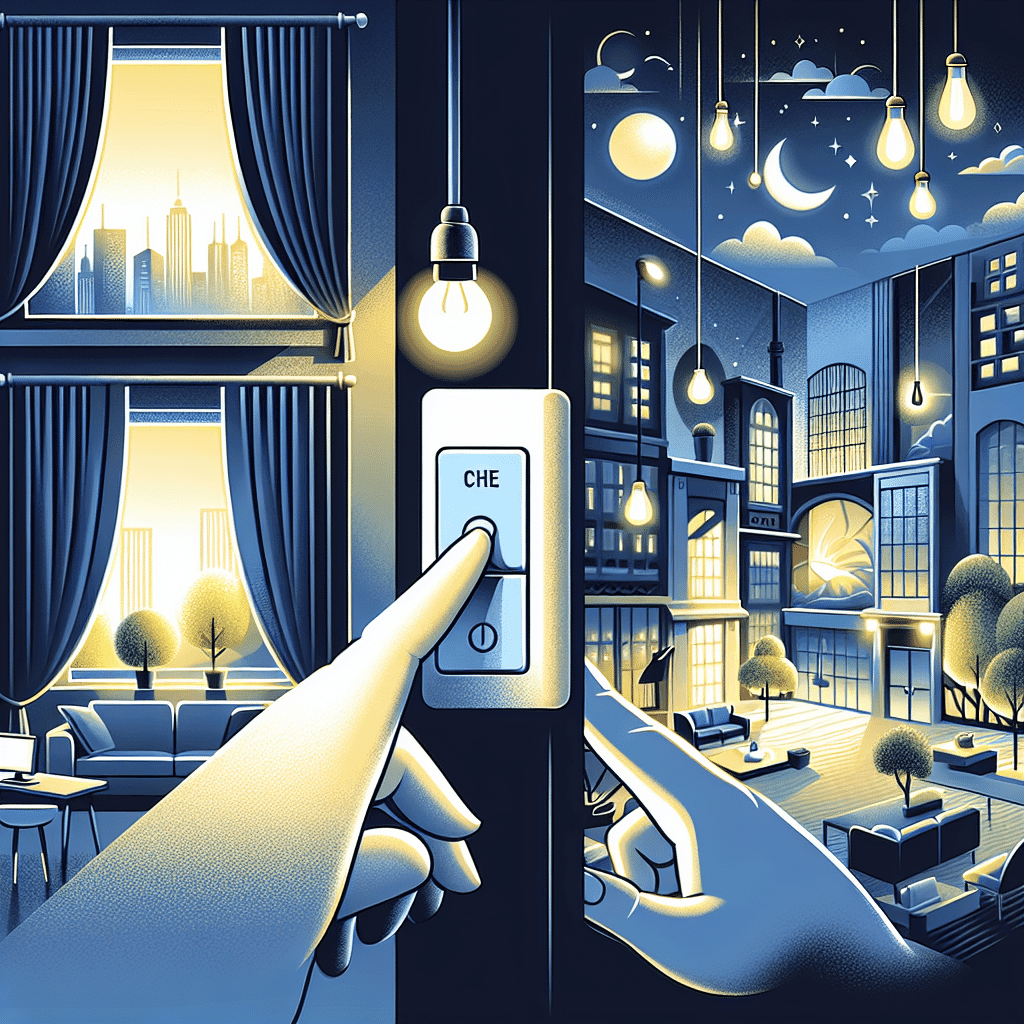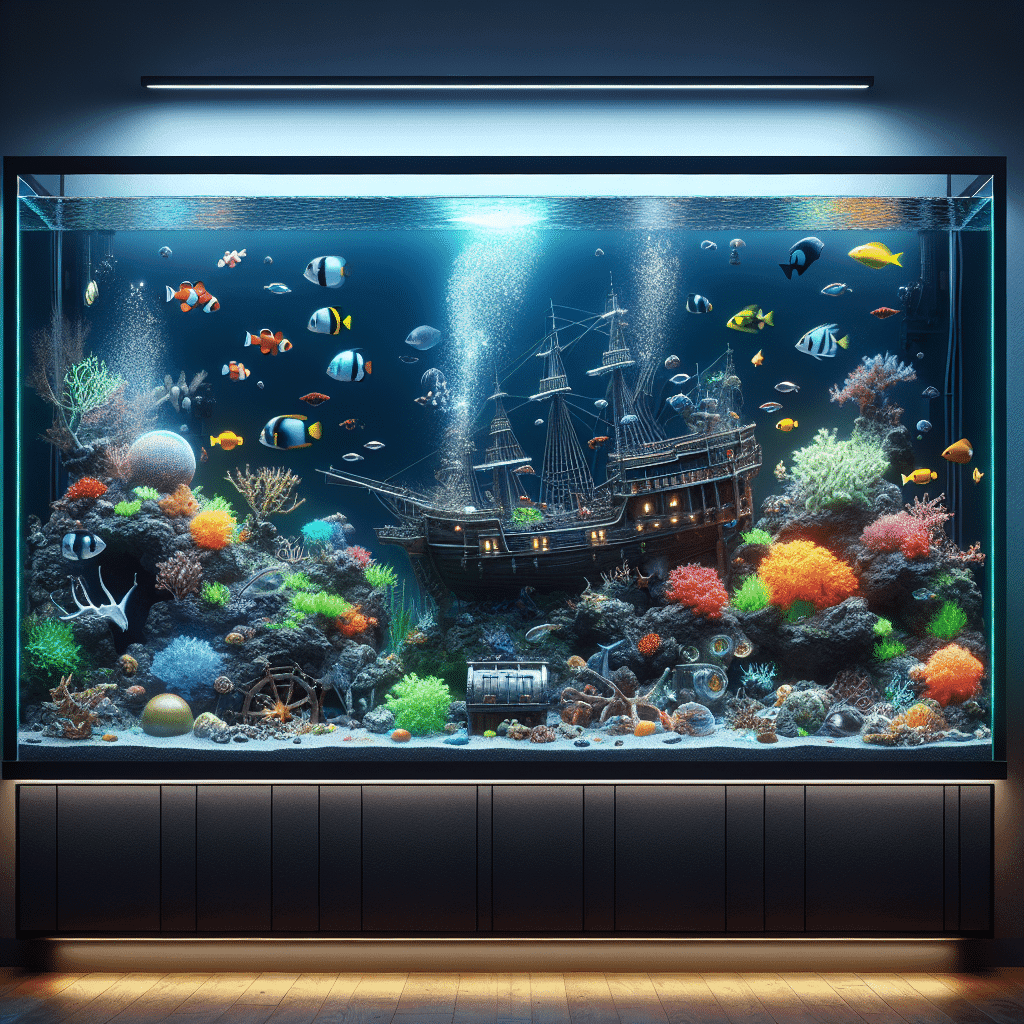Understanding Light Management
Importance of Light Efficiency
As I dive into the world of light management, I find it fascinating how much lighting use can be reduced—up to 50%—with simple strategies! These strategies include the extent and speed of dimming, design of the interface, and effective information feedback. It’s exciting to think about how we can save energy used for lighting while still maintaining a vibrant saltwater aquarium environment (ScienceDirect).
Smart lighting systems are game-changers, capable of slashing lighting energy use by up to two-thirds. They optimize and automate lighting usage, minimizing wastage and enhancing overall efficiency. Imagine being able to adjust the light levels in my aquarium automatically, ensuring my corals and fish get exactly what they need!
Light management systems can significantly reduce overhead expenditures. These systems use sensors to ensure the right amount of light is utilized, which not only saves money but also reduces operational costs. It’s like having a personal assistant for my lighting needs.
Here’s a breakdown of how effective light management can impact energy savings:
| Strategy | Potential Energy Savings |
|---|---|
| Basic Dimming Techniques | Up to 50% |
| Smart Lighting Systems | Up to 66% |
| Sensor Utilization | Significant savings |
A light management system (LMS) optimizes artificial light usage where and when needed. This leads to energy savings, extended lifetime of lighting installations, reduced maintenance costs, and a lower carbon footprint. Tailored lighting solutions can enhance our well-being and compensate for insufficient natural light (Glamox).
Evolution of Lighting Systems
The evolution of lighting systems has been nothing short of revolutionary! Technological advances in integrated daylighting and lighting systems, including the shift to LED technologies, innovative shadings, and advanced lighting controls, promise a dramatic reduction in energy use (ScienceDirect).
Smart lighting systems have eradicated the need for constant human intervention, which means no more worrying about leaving lights on and wasting energy (LinkedIn).
Lighting control systems can create a personalized lighting experience tailored to my needs and mood while meeting energy standards. This is achieved through smarter controls like sensors, schedules, and dimmers.
An example of modern technology is the VIVARES Zigbee wireless light management system offered by LEDVANCE. It provides benefits like simplicity and convenience in commissioning, making it easier for aquarium hobbyists like me to manage lighting effectively (LEDVANCE).
The advancements in lighting systems not only help me achieve the best environment for my marine life but also contribute to energy efficiency, making it a win-win situation!
Energy-Saving Strategies
As a reef tank enthusiast, I am always on the lookout for ways to optimize my aquarium’s light management while saving energy. There are some fantastic techniques and technological advancements that I have discovered which significantly enhance energy efficiency.
Dimming Techniques
One of the most exciting energy-saving strategies I’ve learned about is dimming techniques. By implementing simple strategies, I can reduce lighting use by up to 50% (ScienceDirect). This can be achieved through various methods, including adjusting the extent and speed of dimming, interface design, and providing feedback on lighting usage.
Here’s a brief overview of some effective dimming techniques:
| Dimming Technique | Description | Energy Savings |
|---|---|---|
| Task Tuning | Adjusting light intensity to a necessary level for different spaces | Up to 20% |
| Daylight Harvesting | Utilizing natural light to reduce artificial lighting needs | Variable |
| Occupancy Sensing | Automatically dimming or turning off lights when spaces are unoccupied | Variable |
Lighting control systems that employ these strategies not only save energy but also enhance the ambiance of the marine environment in my aquarium.
Technological Advancements
The innovations in lighting technology have been a game-changer for maintaining my saltwater aquarium. The shift to LED technologies and integrated daylighting systems has led to dramatic reductions in energy use for lighting. These advancements promise improved energy efficiency, which I find incredibly encouraging.
Smart lighting systems are particularly impressive. They can slash lighting energy use by up to two-thirds! Their ability to optimize and automate lighting usage minimizes waste, making my aquarium not just more sustainable but also easier to manage (LinkedIn).
Incorporating these energy-saving strategies and technologies into my aquarium setup has not only helped me maintain optimal light management but has also contributed to a healthier environment for my reef tank. For more insights into setting up your own aquarium, check out my guide on saltwater aquarium setup.
Human Behavior and Energy Savings
Lighting plays a crucial role in our aquarium setups, and understanding how human behavior impacts energy savings can be a game-changer. By incorporating a multidisciplinary approach, I can create a more efficient lighting strategy for my saltwater aquarium.
Multidisciplinary Approach
A multidisciplinary approach in lighting science is essential. It emphasizes the importance of understanding human behavior in achieving additional energy savings beyond technological solutions. For example, knowing how I interact with my lighting systems—whether I leave lights on longer than necessary or forget to turn them off—can significantly influence energy consumption. Research shows that combining insights from psychology, design, and engineering can lead to better energy-saving behaviors and lighting systems (ScienceDirect).
Impact on Energy Efficiency
The impact of lighting on energy efficiency is substantial. Within homes, lighting contributes to 15% of overall energy use. In commercial buildings, this figure rises to around 40%. This means that adopting energy-efficient lighting products is not just a smart choice; it can lead to significant cost savings and reduced carbon emissions. For instance, if I switch to LED lighting in my aquarium, I can save both electricity and money while also benefiting the environment. The potential for savings is compelling, making it an exciting area to explore for any aquarium enthusiast.
| Setting | Percentage of Energy Use from Lighting |
|---|---|
| Home | 15% |
| Commercial | 40% |
By understanding the interplay between human behavior and energy-efficient practices, I can make informed choices about my aquarium lighting. This not only enhances the health of my marine life but also contributes positively to my energy consumption habits. For more insights on setting up my tank, I can explore saltwater aquarium setup and aquarium maintenance.
Benefits of Light Manufacturing
When diving into the world of light management for my saltwater aquarium, I’ve discovered that light manufacturing offers some exciting benefits in both resource allocation and production control. Understanding these advantages can help me make informed choices for my reef tank setup.
Resource Allocation
One of the standout features of light manufacturing is its efficiency in resource allocation. Unlike heavy manufacturing plants, light manufacturing operations require fewer resources and less capital investment. This means that more resources can be dedicated to developing new and better products for aquarium enthusiasts like me.
With improved resource management, light manufacturers can create diverse offerings tailored specifically for our needs. This allows me to explore various lighting options that can optimize the growth of my corals and enhance the beauty of my marine life. Here’s a simple table illustrating the resource allocation benefits:
| Aspect | Light Manufacturing | Heavy Manufacturing |
|---|---|---|
| Resource Dependence | Low | High |
| Capital Investment | Lower | Higher |
| Product Diversity | High | Limited |
When I think about the various products available, I appreciate how light management can elevate my aquarium experience.
Production Control
Another exciting benefit of light manufacturing is the enhanced production control. Light manufacturers often produce products directly for end-users, which gives them greater control over the entire process. This means they can tailor products to meet my specific needs and preferences, leading to stronger commercial relationships.
With this level of control, manufacturers can ensure that the products are made to high standards, which is crucial for maintaining a successful saltwater aquarium. I can trust that the lighting systems I choose will be reliable and effective in supporting the health of my tank. To illustrate this point, here’s a brief table summarizing the production control benefits:
| Control Aspect | Light Manufacturing | Heavy Manufacturing |
|---|---|---|
| End-User Focus | Yes | No |
| Customization | High | Low |
| Quality Assurance | Strong | Variable |
By understanding the benefits of light manufacturing, I feel empowered to make better choices for my aquarium. Whether it’s optimizing my saltwater aquarium setup through efficient lighting or ensuring the longevity of my corals with the right light management strategies, these insights help me create a thriving marine environment. For more detailed guidance, I can explore topics like saltwater aquarium setup and aquarium maintenance to enhance my hobby further.
Human-Centric Approach
Creating a successful light management system in my saltwater aquarium involves more than just choosing the right equipment; it also requires understanding the human elements that contribute to this process.
Role of Human Labor
In the world of light manufacturing, the reliance on human labor adds a unique touch to the products I use in my aquarium. Unlike automated systems that may lack personalization, the involvement of skilled workers ensures that each lighting solution is crafted with care and attention to detail. This human-centric approach means that I can trust the quality and effectiveness of the lighting systems designed for my marine environment. According to VKS, this reliance on human expertise helps create a product that feels more authentic and reliable.
| Advantage of Human Labor | Description |
|---|---|
| Personalized Touch | Skilled workers add attention to detail, enhancing product quality. |
| Quality Assurance | Human oversight ensures that all products meet high standards. |
| Adaptability | Workers can adjust processes based on feedback and specific needs. |
Building Consumer Trust
Building consumer trust is essential for anyone, including me, who is passionate about maintaining a thriving reef tank. When light manufacturers prioritize human involvement in their processes, it fosters a sense of reliability and loyalty among users. I find comfort in knowing that the products I choose are made by individuals who care about their craft, rather than just machines following a set program. This connection can improve my overall experience as a hobbyist.
When I invest in lighting systems that are a result of human labor, I feel like I am contributing to a system that values craftsmanship and quality. Such trust in product integrity is vital, especially when managing delicate ecosystems like my saltwater aquarium. For more insights on creating a successful environment for my marine life, I refer to resources on saltwater aquarium setup and aquarium maintenance.
Safety and Environment
When it comes to managing light in a saltwater aquarium, safety and environmental factors play a crucial role. I am excited to explore how safety standards and healthier work environments contribute to better practices in the hobbyist community.
Safety Standards
In the realm of light management, safety standards are paramount. Light manufacturing plants typically adhere to stringent safety protocols, ensuring that employees have minimal exposure to harmful chemicals. This is a significant advantage compared to heavy manufacturing plants, which often deal with more hazardous materials. By implementing advanced technologies such as IoT devices, organizations can track health and safety protocols effectively, promoting a safer working environment.
| Safety Aspect | Light Manufacturing | Heavy Manufacturing |
|---|---|---|
| Chemical Exposure | Low | High |
| Safety Protocols | Strict | Variable |
| Health Monitoring | Advanced (IoT) | Basic |
Healthier Work Environments
Another exciting aspect of light management is the creation of healthier work environments. Most light manufacturing takes place indoors, which protects workers from the elements and extreme weather conditions. This controlled environment allows for better health outcomes for employees since they are less exposed to outdoor pollutants and variable climate factors.
Moreover, effective lighting management systems not only enhance energy efficiency but also contribute to employee well-being. These systems can be tailored to create a personalized lighting experience that suits individual needs and moods, ultimately improving productivity and job satisfaction.
Incorporating advanced lighting control strategies can also enhance security within the facility. Intelligent systems can work in collaboration with Security Management Systems, utilizing features like occupancy sensing and alert provisions to ensure a safe working environment (Leap Infosys).
By focusing on safety standards and healthier work environments, I believe that we can create a more sustainable and enjoyable experience for everyone involved in the saltwater aquarium hobby. For more insights on setting up your aquarium safely, check out our guide on saltwater aquarium setup and don’t forget to consider water safety in your aquatic environment.
Lighting Control Strategies
Managing light efficiently in my saltwater aquarium is crucial for the health of my marine life. Here are some effective lighting control strategies that I’ve found useful in optimizing light management.
Task Tuning
Task tuning is a fantastic way to save energy while providing the necessary light levels for my reef tank. This strategy, also known as “Institutional Tuning,” can help achieve significant energy savings by reducing energy usage by 20% (WiSilica). By setting the light intensity to the required level for specific areas of the aquarium, I can maintain optimal lighting without overdoing it. This not only helps my corals thrive but also reduces my electricity bill!
| Lighting Level | Recommended Intensity (Lux) |
|---|---|
| Coral Growth | 300-600 |
| Fish Viewing | 100-200 |
| General Lighting | 50-100 |
Daylight Harvesting
I absolutely love using daylight harvesting in my aquarium setup. This strategy automatically dims or adjusts the brightness of my aquarium lights based on the natural light available in the room. It maximizes the use of sunlight while ensuring that my marine creatures receive adequate illumination. This approach not only enhances the aesthetics of my tank but also leads to increased savings by optimizing daylight utilization. By incorporating daylight harvesting, I can create a more natural environment for my fish and corals.
Occupancy Sensing
Occupancy sensing is another brilliant control method I’ve implemented. This system automatically turns on the lights when I enter the room and switches them off shortly after I leave. It’s perfect for ensuring that energy isn’t wasted and that my tank’s lighting is only used when needed (WiSilica). This means I can focus on enjoying my aquarium without worrying about whether I left the lights on.
By using these lighting control strategies, I can effectively manage light in my saltwater aquarium, ensuring the health and beauty of my marine life while also being energy efficient. For more tips on setting up my aquarium, I highly recommend checking out our guide on saltwater aquarium setup.
Smart Lighting Systems
When it comes to managing light in my reef tank, smart lighting systems have completely transformed my aquarium experience. Not only do they provide incredible energy efficiency benefits, but they also bring automation and optimization to the forefront of my tank management.
Energy Efficiency Benefits
Smart lighting systems are game-changers for energy conservation. They can reduce lighting energy use by up to two-thirds! This impressive reduction comes from their ability to optimize and automate lighting usage, significantly minimizing wastage and enhancing overall efficiency (LinkedIn). By using these systems, I feel like I’m doing my part for the environment while still providing the best for my marine life.
Here’s a breakdown of energy savings with smart lighting:
| Feature | Energy Savings (%) |
|---|---|
| Automated Dimming | 20% |
| Daylight-Dependent Control | 30% |
| Occupancy Sensing | 50% |
| Total Potential Savings | Up to 66% |
This table illustrates how various features contribute to overall energy savings. It’s exciting to think about how much less energy is being consumed while still keeping my reef tank vibrant and healthy.
Automation and Optimization
One of the coolest aspects of smart lighting systems is their automation capabilities. These systems eliminate the need for constant human intervention, which means I never have to worry about accidentally leaving the lights on. This smart technology ensures that lights are used only when necessary, optimizing energy consumption and helping my aquarium thrive.
Modern light management systems are designed to be user-friendly, allowing me to easily set up schedules, adjust settings, and monitor energy use. Factors like dimming, daylight-dependent control, and switching based on occupancy or time offer a plethora of saving options. This tailored approach enhances my user experience while ensuring that energy is utilized where and when it’s needed most.
Incorporating smart lighting into my aquarium setup not only maximizes light comfort but also minimizes energy costs. With these systems, I can enjoy a thriving reef tank while contributing to sustainability efforts and reducing my carbon footprint. For anyone interested in optimizing their reef tank, exploring smart lighting options is a must! If you’re just starting, check out our guide on saltwater aquarium setup for more tips on creating the perfect environment for your aquatic life.



